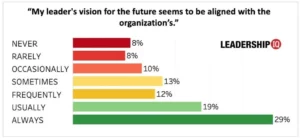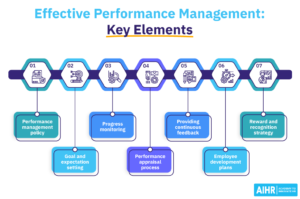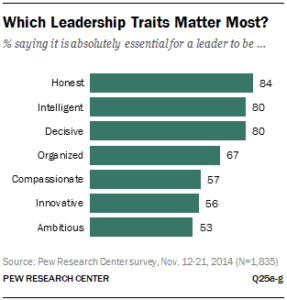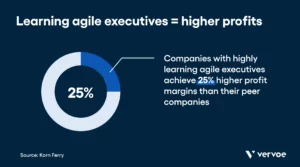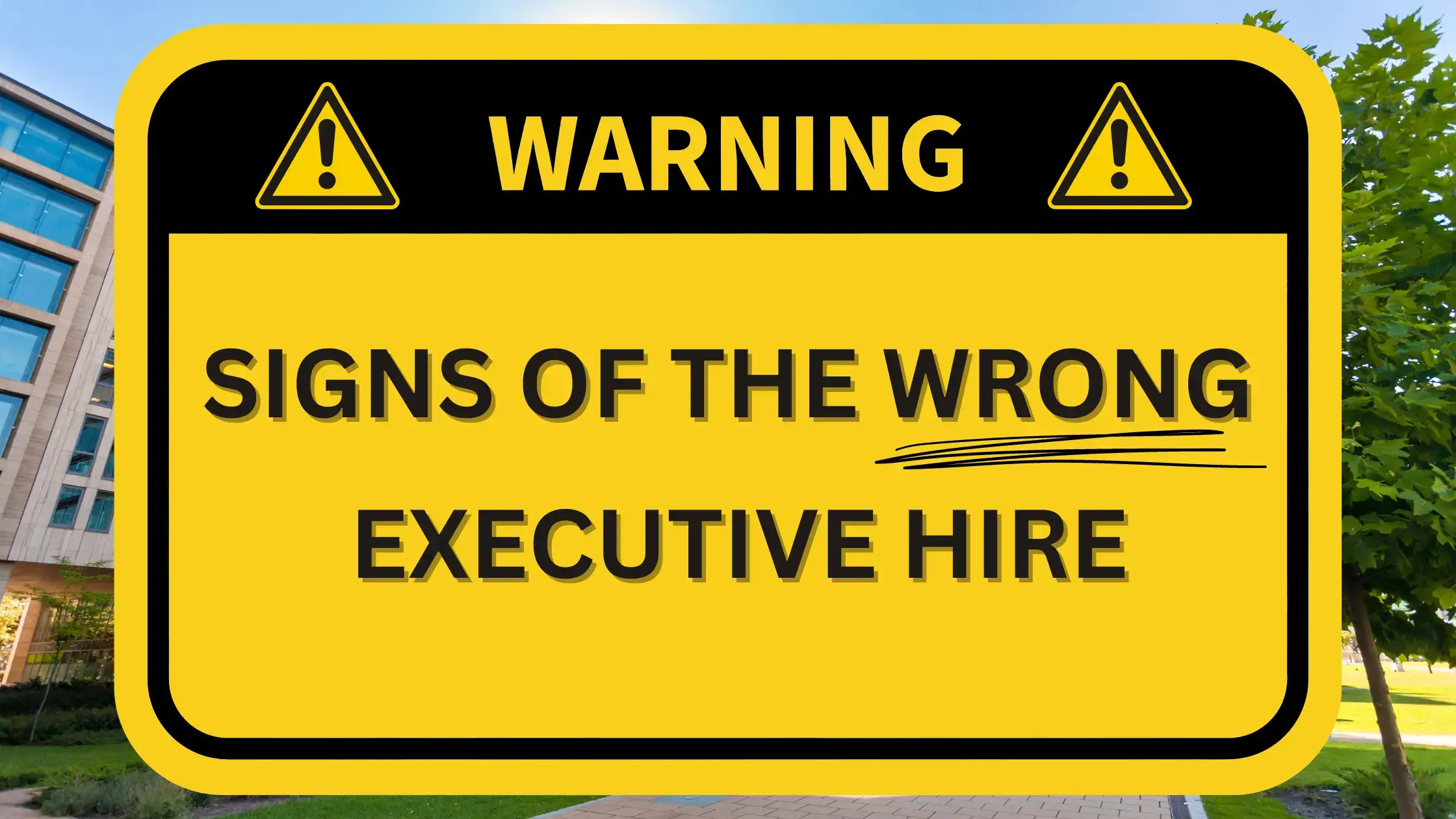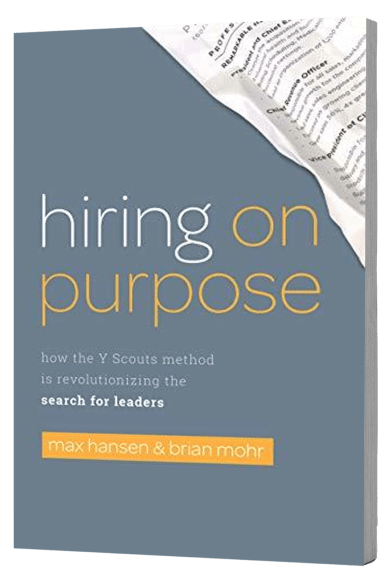Cutting your losses…
Hiring a new executive is a significant investment for any organization, both in terms of time and resources. However, despite the rigorous selection process and high hopes, there are instances when it becomes evident that the newly hired executive may not be the right fit for your company’s needs.
Recognizing the need to let go and cut your losses can be a challenging decision to make. Watching a promising executive struggle or fail to meet expectations can leave you scratching your head, wondering what went wrong.
Conventional strategies for managing underperforming executives often miss the mark. To ensure the long-term success and stability of your organization, it is crucial to know when to take action and part ways with a new executive.
In this article, we will explore key indicators that can help you determine when it’s time to make that difficult decision.
We’ll cover:
- Identifying Misalignment with Organizational Values and Goals
- Assessing Performance and Achievement of Key Objectives
- Examining Leadership Style and Communication Effectiveness
- Evaluating Cultural Fit and Team Dynamics
- Analyzing Adaptability and Learning Agility
Let’s get started.
Table of Contents
ToggleIdentifying Misalignment with Organizational Values and Goals
Knowing when to cut your losses and part ways with the wrong executive leader hire boils down to recognizing misalignment with your organization’s values and goals. A strong leader isn’t just about skills and experience; they need to be in sync with the core values and long-term objectives of your company. If an executive consistently veers off course or fails to drive the organization towards its goals, it’s a clear sign of misalignment.
To drill down further, when an executive leader can’t effectively steer the company in the desired direction, it’s a sign of misalignment with organizational goals. If they consistently fail to make strategic decisions, lack a clear vision, or neglect important aspects of the business, it can cause a major setback. And if attempts to address these issues fail and it becomes clear that the leader’s approach doesn’t align with the organization’s goals, it may be time to consider parting ways.
This is never an easy decision to make though, and many leaders choose to ignore that these issues are happening. However, ignoring this misalignment can create a toxic work environment, lower morale, and impede progress. If/when this happens, it’s crucial to reassess your leadership team and seriously consider making a change to protect the overall health and future success of your company.
Assessing Performance and Achievement of Key Objectives
Assessing the performance and achievement of key objectives is crucial when deciding whether to cut your losses after hiring the wrong executive leader. A capable leader sets clear goals and effectively guides the organization toward success.
If the executive consistently falls short or fails to make tangible progress, it signals incompetence or a misalignment with the role. It’s essential to objectively evaluate the leader’s performance and consider replacing them with new leadership that can drive the organization towards success.
In addition to these red flags, if you have an executive leader who consistently avoids taking responsibility and fails to achieve key objectives, it’s clear that they aren’t the right fit for the role. When they constantly shift blame, refuse to acknowledge their mistakes, or lack the commitment to delivering results, it can create a culture of excuses that hampers the organization’s growth and success.
It’s critical to recognize these patterns and evaluate whether the leader is willing and able to take ownership of their performance. If they aren’t, then making the decision to cut your losses enables the organization to redirect its resources toward finding a leader who is proactive, accountable, and capable of driving the company’s success by achieving important goals.
Examining Leadership Style and Communication Effectiveness
When deciding to cut your losses after hiring the wrong executive leader, evaluate their leadership style and communication. A leader’s style sets the tone for the organization and impacts team dynamics. Ineffective leadership, such as being controlling or lacking emotional intelligence, creates a negative work environment.
Communication skills are crucial too. If the leader struggles to convey their vision or doesn’t listen actively, it hampers alignment and decision-making. Recognize these issues and make the necessary decision to seek leadership that can inspire and communicate effectively.
The leadership style and communication of the wrong executive leader directly impacts employee morale. If their style is demotivating, creates mistrust, or fosters fear, it decreases satisfaction and increases turnover. Effective communication builds relationships and fosters collaboration. so if the leader lacks open dialogue, constructive feedback, or involvement in decision-making, it stifles innovation and limits growth. Assess their style and communication to determine if they’re the right fit. If not, cutting your losses is necessary to preserve morale and foster a positive work environment.
Analyzing Adaptability and Learning Agility
Addressing when to potentially cut your losses after hiring the wrong executive leader also means looking at their adaptability and ability to learn. In today’s fast-paced business world, leaders need to be flexible and continuously grow. If the executive resists change, struggles to adjust strategies to new market trends, or avoids innovation, it can hinder the organization’s growth.
Ignoring these limitations can lead to missed opportunities and stagnation, so it’s important to assess the leader’s adaptability and learning skills. If they consistently fall short in these areas, it might be time to think about moving on.
Additionally, if you’ve hired the wrong executive leader, they may struggle to learn from their mistakes and apply those lessons moving forward. When they keep making the same errors, refuse to take responsibility for their failures, or show a lack of self-reflection and improvement, it negatively impacts both the organization’s growth and the team’s development.
Recognizing this lack of learning agility is vital when deciding to cut your losses. By searching for a leader who embraces a growth mindset, learns from experiences, and adjusts their approach accordingly, you can position your organization for greater success and effectively overcome challenges.
Is It Time To Cut Your Losses?
With all that said, recognizing when to cut your losses after hiring the wrong executive leader is vital for the long-term success of your organization. By evaluating misalignment with organizational values and goals, assessing performance and achievement of key objectives, examining leadership style and communication effectiveness, and analyzing adaptability and learning agility, you can identify the indicators that signal the need for change.
Taking the necessary steps to replace an ineffective executive leader can help foster a positive work environment, drive growth, and position your organization for success. Remember, making difficult decisions in the best interest of your organization is an essential part of effective leadership.

